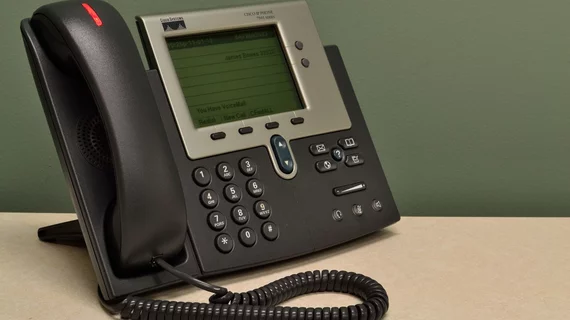Self-directed triage 'phone trees' can significantly reduce disruptions in radiology workflows
Automated, self-directed triage systems enable radiologists to reclaim a significant amount of their interpretation time by eliminating the need for them to reroute phone calls to appropriate extensions.
In large radiology departments where reading rooms are divided by subspecialties (musculoskeletal, neuro, abdominal, etc.), such centralized “phone trees” offer callers a menu of options to choose from; this can improve efficiency and reduce interruptions by preventing radiologists from having to field calls that are not actually intended for them specifically.
In recent years, University Hospitals Cleveland Medical Center in Ohio implemented a centralized phone tree to address frequent interruptions in their Emergency Radiology reading room, where residents are on call and available 24/7 to field calls. Prior to adopting the phone tree, the team often used the line as a catch-all for phone calls that did not warrant emergency assistance throughout the day. Meanwhile available radiologists were stationed in appropriate reading rooms, their subspecialized expertise going under-tapped.
The group describes their experience with the change in Current Problems in Diagnostic Radiology.
After consulting with residents and attending radiologists, the department implemented a self-directed phone tree in August of 2021. To measure its effectiveness on interruptions and workflow, the group analyzed call records before and after the phone tree became available. They also surveyed residents on its resultant impact.
The researchers observed a significant reduction in the amount of phone calls in the emergency reading room—a decrease to 8 calls over a 19-day period from 100 to 200 phone calls over a 20- to 22-day period.
The department’s residents also reported improvements in workflow post-implementation, including a substantial decrease in inappropriate calls being sent to the emergency reading room. Pre-implementation, residents stated that the inappropriate calls they fielded were “excessive, disruptive and detrimental to education.” They also suggested that these calls reduced their workplace satisfaction and increased burnout.
While the phone tree was perceived as a positive change in the radiology department, its popularity did not end there, the authors suggested.
“Not only did implementation of the phone tree decrease workflow interruptions for trainees and radiologists, but it is our impression that it was also of value to clinical referrers,” corresponding author RaeLynne MacBeth, MD, with the Department of Radiology at University Hospitals Cleveland Medical Center, and colleagues noted.
Prior data have shown that triage assistants (residents, administrative personnel, etc.) can address the issue of rerouting calls to appropriate extensions, but this comes at an added cost that is not always financially feasible for departments. Phone trees, however, are a cost-effective means of reducing unnecessary interruptions, the group suggested, later adding that this can be achieved “in an easily accessible manner.”

